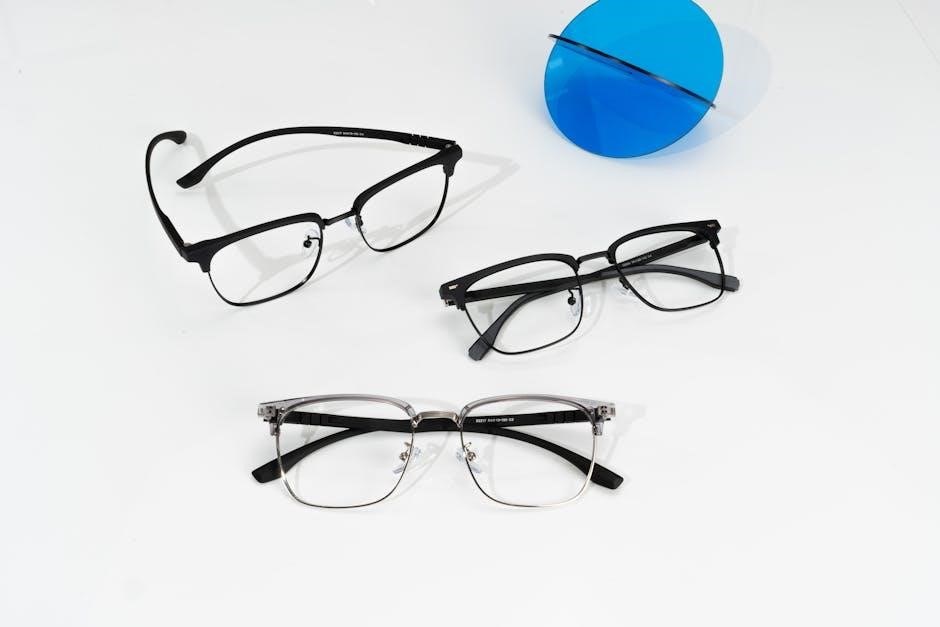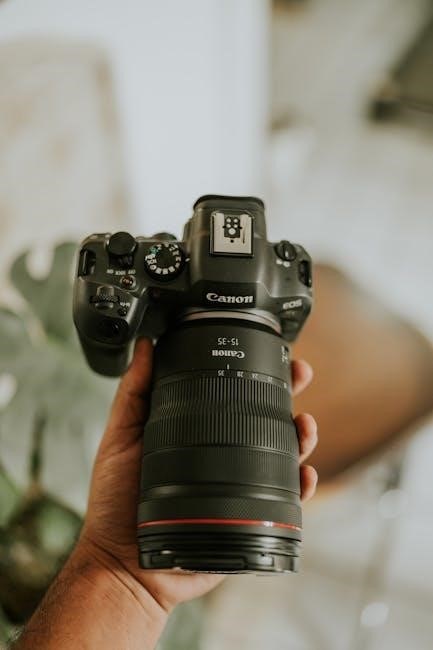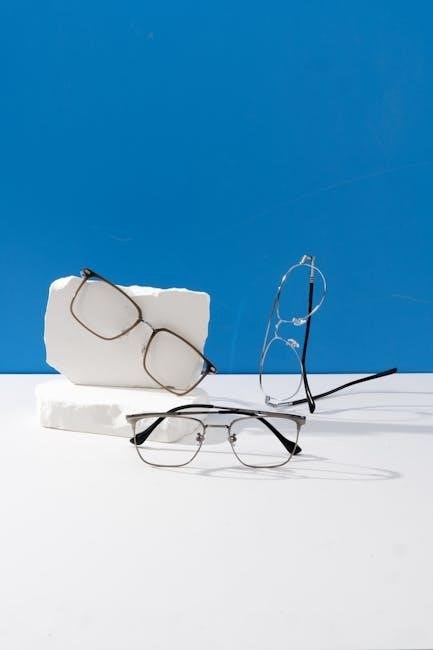The AS5202 specification outlines standards for internal straight thread ports and fittings, adopted by the Department of Defense for aerospace applications, ensuring precision and durability.
Overview of AS5202 Standard
The AS5202 standard, adopted by the Department of Defense in 2002, defines specifications for internal straight thread ports and fittings used in aerospace applications. It ensures compatibility with fittings conforming to AS4875 and emphasizes precision manufacturing. Key features include polished flute faces for optimal performance and ALTiN coatings for enhanced surface finish. The standard replaces MS33649 tools, offering improved durability and custom diameters for specific needs. It is widely recognized for its role in fluid fittings and ports, supporting advanced aerospace engineering. AS5202 ensures maximum concentricity and meets rigorous quality control standards, making it a critical component in modern aerospace design and manufacturing.
Historical Background and Adoption

The AS5202 standard was officially adopted by the Department of Defense on July 17, 2002, as part of their efforts to standardize aerospace components. It was developed by SAE International to address the need for consistent specifications in internal straight thread ports and fittings. The adoption marked a significant milestone in aerospace engineering, replacing older standards like MS33649. The DoD’s endorsement ensured its widespread implementation across military and aerospace applications. This standardization aimed to enhance reliability, reduce variability, and improve manufacturing processes. AS5202 has since become a cornerstone in aerospace design, ensuring compatibility and performance across various systems. Its adoption has been instrumental in advancing the industry’s technical capabilities and maintaining stringent quality control measures.
Key Features and Applications
The AS5202 specification is renowned for its precision-engineered ports and fittings, designed to meet the stringent demands of aerospace applications. Key features include polished flute faces for optimal performance, ALTiN coatings for enhanced surface finish, and precision-ground components to ensure maximum concentricity. These features contribute to improved durability and reliability in high-stress environments. The standard is primarily used in fluid fittings and ports, where consistency and performance are critical. Its applications extend to various aerospace systems requiring secure and leak-proof connections. Custom diameters and lengths can be specified to meet unique project requirements, making AS5202 versatile for diverse engineering needs. This specification ensures compatibility with other aerospace standards, such as AS4875 fittings, further broadening its utility in modern aerospace design and manufacturing.

Technical Specifications of AS5202
AS5202 defines internal straight thread ports and fittings, specifying design, material, and tolerance requirements. It ensures precise manufacturing and inspection standards for aerospace applications, replacing MS33649 tools with enhanced features like polished flute faces and ALTiN coatings for optimal performance and durability.
Port or Fitting End Design
The AS5202 standard specifies the design requirements for port or fitting ends, ensuring compatibility with fittings conforming to AS4875. The design features a polished flute face for optimal performance and includes an ALTiN coating to enhance surface finish and durability. The fitting end is precision-ground for maximum concentricity, ensuring accurate alignment and secure connections in aerospace applications. The standard also outlines minimum diameter flat surface clearance and thread dimensions, critical for maintaining structural integrity and fluid flow efficiency. These design elements are crucial for meeting the rigorous demands of aerospace engineering, where reliability and precision are paramount. The AS5202 port tools have replaced MS33649 tools, offering improved cutting speeds and custom diameters for specific needs.
Internal Straight Thread Dimensions
The AS5202 standard defines precise internal straight thread dimensions for ports and fittings, ensuring compatibility and reliability in aerospace applications. The thread size specifications are detailed, with tolerances such as .001-.000 T, .003 A, .001 D, and .002 E, ensuring exacting standards. The minor diameter lengths are customizable to meet specific requirements, while the thread mills are designed for accuracy and consistency. These dimensions are critical for maintaining proper fitment and fluid flow in high-performance systems. The standard also emphasizes the importance of polished flute faces and ALTiN coatings to enhance surface finish and durability. By adhering to these strict dimensional requirements, AS5202 ensures optimal performance and longevity in demanding aerospace environments.
Material Requirements and Tolerances
The AS5202 specification outlines strict material requirements and tolerances to ensure high performance and reliability in aerospace applications. Materials must meet rigorous standards for strength, durability, and resistance to environmental factors. The standard specifies the use of high-quality materials, such as aluminum and stainless steel, which are precision ground for maximum concentricity. Tolerances are tightly controlled, with precise specifications for thread dimensions, surface finish, and coating requirements. The ALTiN coating is emphasized for improved surface durability and resistance to wear. These material and tolerance standards are critical for maintaining the integrity of fluid fittings and ports in demanding aerospace environments, ensuring optimal performance and longevity under extreme conditions.
Manufacturing and Inspection Standards
The AS5202 standard mandates stringent manufacturing and inspection processes to ensure compliance with aerospace-grade requirements. All components must undergo rigorous quality control checks, including precise thread measurements and surface finish inspections. The use of advanced materials, such as high-strength alloys, is required to meet durability and performance standards. Manufacturing processes must adhere to SAE guidelines, with a focus on precision grinding and polishing to achieve maximum concentricity. Inspection standards include dimensional verification and coating tests, such as the ALTiN coating for enhanced surface finish. These processes ensure that AS5202 ports and fittings meet the demanding conditions of aerospace applications, guaranteeing reliability and longevity in service.
Compliance and Certification
AS5202 compliance ensures adherence to SAE standards, with rigorous quality control and verification processes, meeting Department of Defense requirements for aerospace applications and reliability.
SAE-AS5202 Compliance Guidelines
Compliance with SAE-AS5202 requires adherence to strict standards for internal straight thread ports and fittings, ensuring precision and durability. The specification, adopted by the Department of Defense, mandates specific dimensions, materials, and manufacturing processes. Tools such as MS33649 are referenced, with AS5202 port tools replacing older standards. Verification involves rigorous quality control, including inspections and testing to meet aerospace-grade reliability. Manufacturers must follow detailed guidelines for thread dimensions, surface finishes, and material tolerances. Compliance ensures compatibility with AS4875 fittings and other related standards. Proper documentation, including datasheets and technical drawings, is essential for certification. Adherence to these guidelines guarantees optimal performance in aerospace applications, aligning with industry best practices and regulatory requirements.
Department of Defense (DoD) Adoption
The Department of Defense (DoD) adopted the SAE-AS5202 standard on July 17, 2002, for internal straight thread ports and fittings in aerospace applications. This adoption aimed to standardize and enhance the reliability of fluid system components. The DoD mandated that all related products must comply with AS5202, replacing older specifications like MS33649. The adoption ensured uniformity in design, materials, and manufacturing processes across suppliers. This standardization improved compatibility with AS4875 fittings and facilitated the use of advanced tools like ALTiN-coated port tools. The DoD’s adoption underscored the importance of AS5202 in meeting stringent aerospace requirements, ensuring precision, durability, and optimal performance in critical applications. This move aligns with the DoD’s commitment to maintaining cutting-edge technology in defense systems.
Quality Control and Verification Processes

Quality control and verification processes for AS5202 ensure compliance with strict aerospace standards. Manufacturers employ rigorous inspection protocols, including dimensional checks and material testing. Advanced tools, such as precision ground thread mills with ALTiN coatings, enhance cutting accuracy. Verification involves third-party audits and certification to guarantee adherence to SAE-AS5202 requirements. Documentation, including detailed technical drawings and datasheets, is maintained for traceability. These processes ensure that every component meets the specified tolerances and performance criteria, critical for aerospace applications. Regular updates and compliance checks further reinforce the reliability of AS5202 products, making them a cornerstone of modern aerospace engineering and fluid system design. This meticulous approach ensures long-term durability and operational excellence in demanding environments.

Related Standards and Tools
AS5202 is closely related to MS33649 and AS4875 standards, ensuring compatibility with existing aerospace systems. It also integrates with MS16142 port tools for precise manufacturing processes.
MS33649 and MS16142 Port Tools
MS33649 and MS16142 port tools are critical in manufacturing processes aligned with AS5202 specifications. These tools ensure precise thread cutting and fitting, meeting strict aerospace standards. Scientific Cutting Tools has transitioned from MS33649 to AS5202 tools, offering improved performance. The MS33649 tools are being phased out, with AS5202 becoming the new standard. These tools feature polished flute faces and ALTiN coatings for enhanced durability and surface finish. They are ideal for non-standard minor diameters, providing maximum concentricity. The transition ensures compatibility with legacy systems while adopting advanced manufacturing techniques. Verus Works and other manufacturers support this shift, offering custom solutions for aerospace applications. This evolution underscores the importance of adapting to modern aerospace demands.
Compatibility with AS4875 Fittings
The AS5202 specification ensures seamless compatibility with AS4875 fittings, which are widely used in aerospace applications. This compatibility is crucial for maintaining consistency in fluid systems and ensuring reliable connections. The AS5202 ports are designed to mate with AS4875 fittings, providing a secure and leak-free interface. Key features include minimum diameter flat surface clearance and precise thread dimensions, which align perfectly with AS4875 requirements. This compatibility simplifies system integration and reduces the risk of assembly errors. The AS5202 standard builds on the legacy of AS4875, offering enhanced performance while maintaining backward compatibility. This ensures that existing systems can be easily upgraded without requiring major redesigns. The combination of AS5202 ports and AS4875 fittings remains a cornerstone in aerospace fluid system design.
Scientific Cutting Tools for AS5202
Scientific Cutting Tools (SCT) offers specialized tools designed for AS5202 ports, ensuring precision and efficiency in manufacturing. These tools are engineered to meet the rigorous demands of aerospace applications, featuring advanced coatings like ALTiN for superior surface finish and extended tool life. SCT’s AS5202 tools are precision ground for maximum concentricity, enabling accurate thread production. They are compatible with non-standard minor diameter lengths, offering flexibility for custom requirements. The tools are manufactured to replace legacy MS33649 port tools, providing improved performance and compliance with modern standards. SCT’s commitment to quality ensures that AS5202 ports meet the highest industry specifications, making them a reliable choice for aerospace engineers and manufacturers. Their tools are widely adopted for their reliability and consistency in high-precision environments.

Applications in Aerospace Industry
AS5202 ports and fittings are critical in aerospace for fluid systems, offering precise connections and durability. They support custom diameters and lengths, enhancing system performance and reliability.
Use in Fluid Fittings and Ports
The AS5202 standard is integral to the design and functionality of fluid fittings and ports in aerospace systems. It specifies the dimensions, tolerances, and materials required for internal straight thread ports, ensuring reliable connections in hydraulic and pneumatic applications. These ports are designed to withstand the rigorous demands of aerospace environments, including high pressures and varying temperatures. Compliance with AS5202 guarantees compatibility with fittings conforming to AS4875, enabling seamless integration into fluid systems. The standard also accommodates custom diameters and lengths, allowing for tailored solutions to meet specific mission requirements. This adaptability, combined with precise manufacturing standards, makes AS5202 ports indispensable in modern aerospace engineering.
Role in Aerospace Design and Engineering
AS5202 plays a pivotal role in aerospace design and engineering by providing standardized specifications for internal straight thread ports and fittings. Its adoption by the Department of Defense ensures reliable and consistent performance in critical aerospace applications. The standard enables engineers to design systems with precise thread dimensions, material quality, and manufacturing tolerances, ensuring structural integrity and fluid system reliability. By adhering to AS5202, aerospace components meet stringent safety and performance requirements, contributing to the overall efficiency and durability of aircraft and spacecraft. Its compatibility with other aerospace standards, such as AS4875, further streamlines design and integration processes, making it indispensable in modern aerospace engineering practices.
Custom Diameters and Lengths for Specific Needs
AS5202 supports custom diameters and lengths, catering to specialized aerospace applications where standard sizes may not suffice. This flexibility allows engineers to tailor ports and fittings to exact project requirements, ensuring optimal performance in unique or challenging environments. Custom configurations are manufactured with the same precision and quality as standard components, maintaining compliance with AS5202 specifications. By offering adjustable dimensions, the standard accommodates diverse system designs, enhancing adaptability without compromising reliability. This feature is particularly valuable in high-performance aerospace systems, where customized solutions often drive innovation and efficiency. The ability to specify exact measurements ensures seamless integration and maximizes the functionality of fluid and mechanical systems in aircraft and spacecraft.

Manufacturing and Performance
AS5202 ports are manufactured with polished flute faces, ALTiN coatings, and precision grinding, ensuring optimal performance, surface finish, and concentricity, meeting MS33649 standards.
Polished Flute Face for Optimum Performance
The AS5202 specification emphasizes the importance of a polished flute face, which significantly enhances tool performance and longevity. This feature minimizes friction and ensures a smoother cutting process, reducing wear and tear. The polished finish also improves surface quality, leading to better concentricity and overall machining accuracy. By meeting MS33649 standards, the polished flute face ensures compatibility and reliability in demanding aerospace applications. This design detail is particularly beneficial for non-standard minor diameter lengths, offering flexibility for custom requirements. The polished flute face is a critical aspect of AS5202 manufacturing, directly contributing to its reputation for precision and durability in aerospace engineering.
ALTiN Coating for Improved Surface Finish
The AS5202 specification incorporates an advanced ALTiN coating, which significantly enhances the surface finish of port tools. This coating provides exceptional hardness and wear resistance, reducing tool degradation during high-speed machining. It also minimizes the risk of galling and corrosion, ensuring consistent performance in harsh environments. The ALTiN coating is particularly beneficial for applications requiring high cutting speeds and precision, making it ideal for aerospace manufacturing. By adhering to MS33649 standards, the ALTiN coating contributes to the overall durability and reliability of AS5202 tools, ensuring they meet the rigorous demands of modern aerospace engineering. This feature is a testament to the specification’s commitment to innovation and quality.
Precision Ground for Maximum Concentricity
Precision grounding is a critical aspect of AS5202 tools, ensuring maximum concentricity for optimal performance; This process involves meticulous machining to achieve tight tolerances, minimizing radial runout and ensuring precise alignment. The result is enhanced tool stability, reduced vibration, and improved thread quality. High concentricity is essential for maintaining consistent thread production, particularly in aerospace applications where precision is paramount. The AS5202 standard emphasizes this requirement to meet the demands of high-speed machining and stringent quality control. By adhering to these specifications, tools deliver superior accuracy and reliability, making them indispensable in modern manufacturing processes. This focus on precision grounding underscores the specification’s commitment to excellence and durability in aerospace engineering.

Documentation and Resources
AS5202 specifications are detailed in official datasheets, PDFs, and technical drawings, providing comprehensive insights into port dimensions, tolerances, and manufacturing guidelines for compliance and design accuracy.
AS5202 Datasheet Overview
The AS5202 datasheet provides a comprehensive overview of the standard, detailing specifications for internal straight thread ports and fittings. Available as a PDF, it includes technical drawings, dimensional tolerances, and material requirements. The document serves as a reference for manufacturers and engineers, ensuring compliance with aerospace standards. It outlines key features such as polished flute faces for optimal performance and ALTiN coatings for enhanced surface finish. Additionally, the datasheet covers manufacturing processes and quality control measures, aligning with SAE-AS5202 guidelines. This resource is essential for understanding the design and application of AS5202 ports in aerospace engineering, offering detailed insights for precise implementation and adherence to industry norms.
SAE-AS5202 Port Dimensions PDF
The SAE-AS5202 Port Dimensions PDF is a detailed technical document providing precise measurements for internal straight thread ports. It includes diagrams and charts for various port sizes, ensuring accuracy in manufacturing and installation. The PDF specifies minimum and maximum tolerances, thread forms, and surface finishes, aligning with aerospace standards. Engineers and manufacturers use this document to verify compliance with AS5202 specifications. It also covers port configurations compatible with AS4875 fittings, offering a comprehensive guide for design and production. This resource is crucial for maintaining consistency and quality in aerospace applications, ensuring reliable performance under demanding conditions. Regular updates reflect advancements in material technology and manufacturing processes, keeping the standard aligned with industry needs.
Technical Drawings and Diagrams
Technical drawings and diagrams for AS5202 provide detailed visual representations of port designs, thread forms, and fitting configurations. These resources include precise measurements, dimensional tolerances, and assembly instructions, ensuring compliance with aerospace standards. Diagrams cover various thread angles, such as 30° and 45°, and specify helical relief and radius requirements. Compatibility with AS4875 fittings is illustrated, along with guided and non-guided tool configurations. The drawings are available in PDF formats, offering scalable views for engineering and manufacturing reference. They are essential for verifying port accuracy and ensuring proper installation in aerospace applications. Regular updates reflect advancements in design and manufacturing practices, maintaining alignment with industry needs. These visuals are indispensable for engineers and manufacturers to achieve precise and reliable outcomes.

Future Trends and Developments
Future trends include advancements in eco-friendly manufacturing processes and sustainable material use, aiming to reduce environmental impact while maintaining AS5202’s high-performance standards.
Advancements in Material Technology
Advancements in material technology for AS5202 focus on developing high-performance materials with improved strength, corrosion resistance, and thermal stability. Recent innovations include the use of advanced coatings like ALTiN, which enhances surface finish and tool life. These materials are designed to meet the rigorous demands of aerospace applications, ensuring durability and reliability. Additionally, research is underway to integrate sustainable and lightweight materials without compromising performance. Such advancements aim to reduce environmental impact while maintaining the high standards required by the aerospace industry. These developments are critical for future applications, ensuring AS5202 remains at the forefront of technological progress in fluid fittings and ports.
Next-Generation Port Tools and Fittings
Next-generation port tools and fittings under AS5202 are evolving to meet advanced aerospace demands. Scientific Cutting Tools is transitioning from MS33649 to AS5202, offering improved precision and compatibility. These tools feature polished flute faces and ALTiN coatings for enhanced performance. Custom diameters and lengths cater to specific needs, while precision grinding ensures maximum concentricity. The development focuses on faster cutting speeds and higher durability, aligning with modern manufacturing standards. These innovations ensure AS5202 tools remain integral to aerospace engineering, providing reliable solutions for fluid fittings and ports in demanding environments. Such advancements are pivotal for maintaining quality and efficiency in the industry.
Sustainability and Eco-Friendly Practices
Sustainability is a growing focus in the development of AS5202 port tools and fittings. Modern manufacturing processes emphasize eco-friendly materials and energy-efficient production methods. The use of recyclable materials in tool construction reduces environmental impact. Additionally, advancements in coating technologies, such as ALTiN, enhance tool durability, minimizing waste from frequent replacements. Efforts to optimize production cycles also contribute to lower energy consumption. The aerospace industry’s shift toward greener practices aligns with AS5202 standards, ensuring that next-generation tools meet both performance and environmental requirements. These initiatives highlight the importance of balancing innovation with sustainability in the development of AS5202-compliant products.
The AS5202 specification serves as a critical standard for aerospace ports and fittings, ensuring precision and reliability. Its adoption by the Department of Defense underscores its importance in modern aerospace engineering, driving innovation and adherence to rigorous technical requirements for future applications.
The AS5202 standard is a critical specification for internal straight thread ports and fittings, widely adopted in aerospace applications; Its importance lies in ensuring precision, reliability, and interoperability across aerospace systems. By providing standardized dimensions and design guidelines, AS5202 facilitates consistent manufacturing and performance, minimizing errors and enhancing safety. Its adoption by the Department of Defense underscores its reliability and adherence to rigorous technical requirements. The specification also supports custom solutions, such as non-standard diameters and lengths, making it adaptable to diverse engineering needs. Overall, AS5202 plays a pivotal role in advancing aerospace engineering and maintaining high-quality standards in fluid fittings and ports.
Impact on Aerospace Engineering
The AS5202 specification has significantly influenced aerospace engineering by establishing standardized dimensions for internal straight thread ports and fittings. This standardization ensures compatibility and consistency across various aerospace systems, reducing design complexities and potential failures. By providing precise manufacturing guidelines, AS5202 enhances the reliability and performance of fluid systems critical to aircraft operations. Its adoption has streamlined production processes and improved collaboration among manufacturers and engineers. Furthermore, AS5202 supports advanced material technologies, such as ALTiN coatings, which contribute to improved surface finishes and durability. This specification is a cornerstone for modern aerospace engineering, driving innovation and maintaining the highest standards of quality and safety in the industry.

Final Thoughts on Adoption and Use
The adoption of AS5202 has proven instrumental in advancing aerospace engineering, offering a robust framework for port and fitting designs. Its widespread use ensures consistency and reliability, adhering to stringent industry standards. Manufacturers benefit from clear guidelines, reducing production variability and enhancing product quality. The specification’s emphasis on material innovation, such as ALTiN coatings, underscores its commitment to performance and durability. As the aerospace sector evolves, AS5202 remains a vital tool, supporting both current and future advancements. Its continued adoption is essential for maintaining the highest standards in aerospace applications, ensuring safety and efficiency in critical systems.
